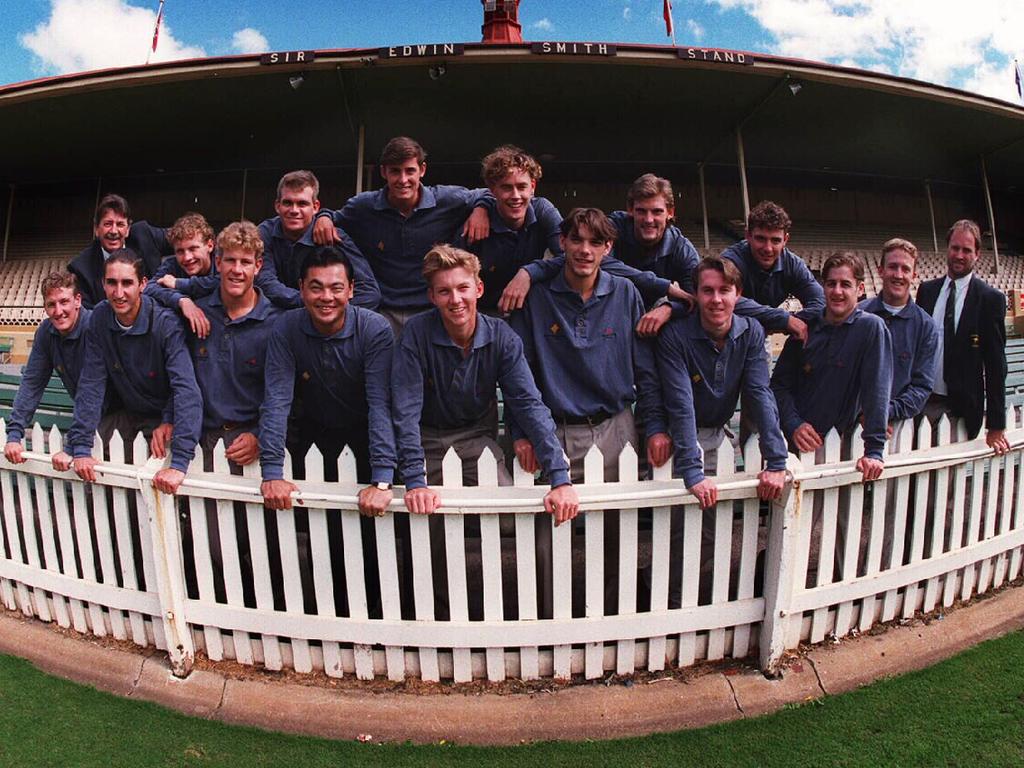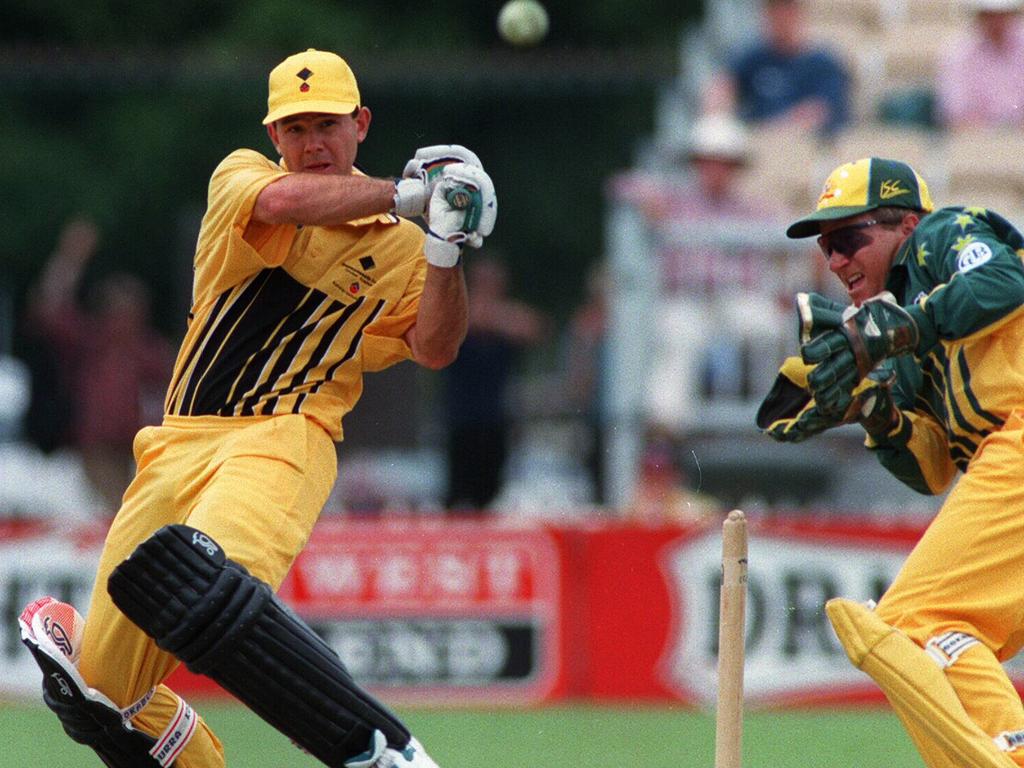For more than 30 years our best young cricketers honed their craft at the Australian Cricket Academy. If we don’t want our depth to dry up it’s time to bring it back, writes Robert Craddock.
It’s time for Australia to go back to the future to inject the finesse and fibre into its next generation of Test cricketers.
Australia should swallow its pride and reactivate its time honoured talent factory, the Australian Cricket Academy, that helped flush out generational talents Ricky Ponting, Glenn McGrath and Adam Gilchrist.
The academy was introduced in 1987 but phased out amid cost cutting during the Covid era and squabbling among the states who wanted to do the job themselves.
For more than 30 years the best young cricketers in the country assembled during the winter for focused training under the likes of Rod Marsh and Greg Chappell where they learnt about fitness, diet, media training, discipline, game awareness, living away from home and even the history of the game.

Australian Institute of Sport (AIS) Cricket Academy Intake for 1995 : (Back Row L-R) Rod Marsh (Head Coach), Clinton Peake, Matthew Mott, Mike Hussey, Matthew Nicholson, Mark Harrity & Kade Harvey : (Front Row L-R) Corey Richards, Jason Gillespie, Evan Arnold, Richard Chee Quee (Scholarship Coach), Brett Lee, Ian Hewett, Stephen Bell, Peter Roach, Clinton Perren & Richard Done (Coach). Picture: Pip Blackwood.
Shane Warne was famously kicked out but even that experience helped him in later years.
The list of graduates included Brett Lee, Michael Clarke, Jason Gillespie, Damien Martyn and Andrew Symonds.
Even players who didn’t go to the Academy were inspired by it. When Matt Hayden rang up Marsh asking to be considered, Marsh replied “we are really only after people who are going to play first class cricket.’’
The remark remained a razor-tipped burr on Hayden’s saddle throughout the early days of his 103-Test career.
The Academy was responsible for propelling Australia to the top of the world in the mid-1990s and keeping it close to the top of the mountain ever since.
States thought they could do it better but it never turned out that way.
Greg Chappell, in his recent column for Nine newspapers, called the decision to scrap the academy “catastrophic’’ and said the states were entrusted for a job for which they were “ill-equipped.’’

Ricky Ponting hits out in a match between the Cricket Academy and Australia.
Australia may well win the World Test Championship for the second time this year but rarely has the depth outside the squad been as shallow. Spin bowling depth beyond Nathan Lyon is shallower than a baby’s bath while Australia is still not sure who it’s best batsman is outside the Test team.
Former Test keeper Ian Healy said on SEN recently relaunching the Academy could be of enormous benefit to Australia.
“We are entering an era where so many of our young players could benefit from having a hard set of eyes on them,’’ Healy said.
“My thoughts are for three months have training, strengthening and playing where performance is the key indicator and the key focus.
”Get them in from mid-May to mid-August to be mentored into what’s needed to succeed at the highest level. Our cricket smarts and innovation have stalled, and the dearth of trusted openers was a sure sign that our performance depth is light.’’

It’s time for Australia to go back to the future to inject the finesse and fibre into its next generation of Test cricketers.
Australia should swallow its pride and reactivate its time honoured talent factory, the Australian Cricket Academy, that helped flush out generational talents Ricky Ponting, Glenn McGrath and Adam Gilchrist.
The academy was introduced in 1987 but phased out amid cost cutting during the Covid era and squabbling among the states who wanted to do the job themselves.
For more than 30 years the best young cricketers in the country assembled during the winter for focused training under the likes of Rod Marsh and Greg Chappell where they learnt about fitness, diet, media training, discipline, game awareness, living away from home and even the history of the game.

Australian Institute of Sport (AIS) Cricket Academy Intake for 1995 : (Back Row L-R) Rod Marsh (Head Coach), Clinton Peake, Matthew Mott, Mike Hussey, Matthew Nicholson, Mark Harrity & Kade Harvey : (Front Row L-R) Corey Richards, Jason Gillespie, Evan Arnold, Richard Chee Quee (Scholarship Coach), Brett Lee, Ian Hewett, Stephen Bell, Peter Roach, Clinton Perren & Richard Done (Coach). Picture: Pip Blackwood.
Shane Warne was famously kicked out but even that experience helped him in later years.
The list of graduates included Brett Lee, Michael Clarke, Jason Gillespie, Damien Martyn and Andrew Symonds.
Even players who didn’t go to the Academy were inspired by it. When Matt Hayden rang up Marsh asking to be considered, Marsh replied “we are really only after people who are going to play first class cricket.’’
The remark remained a razor-tipped burr on Hayden’s saddle throughout the early days of his 103-Test career.
The Academy was responsible for propelling Australia to the top of the world in the mid-1990s and keeping it close to the top of the mountain ever since.
States thought they could do it better but it never turned out that way.
Greg Chappell, in his recent column for Nine newspapers, called the decision to scrap the academy “catastrophic’’ and said the states were entrusted for a job for which they were “ill-equipped.’’

Ricky Ponting hits out in a match between the Cricket Academy and Australia.
Australia may well win the World Test Championship for the second time this year but rarely has the depth outside the squad been as shallow. Spin bowling depth beyond Nathan Lyon is shallower than a baby’s bath while Australia is still not sure who it’s best batsman is outside the Test team.
Former Test keeper Ian Healy said on SEN recently relaunching the Academy could be of enormous benefit to Australia.
“We are entering an era where so many of our young players could benefit from having a hard set of eyes on them,’’ Healy said.
“My thoughts are for three months have training, strengthening and playing where performance is the key indicator and the key focus.
”Get them in from mid-May to mid-August to be mentored into what’s needed to succeed at the highest level. Our cricket smarts and innovation have stalled, and the dearth of trusted openers was a sure sign that our performance depth is light.’’






